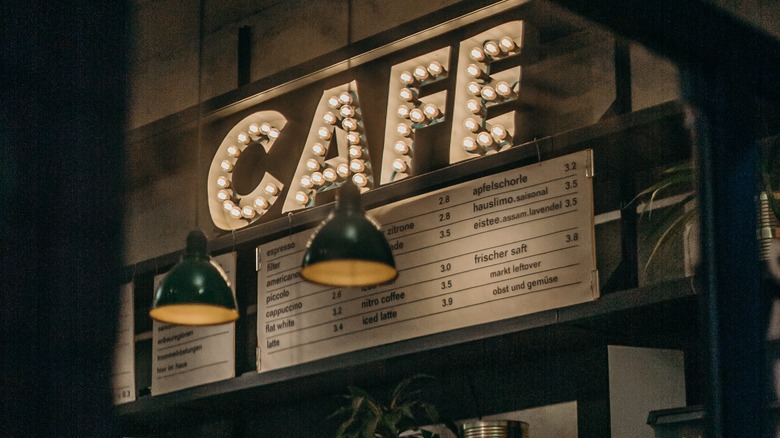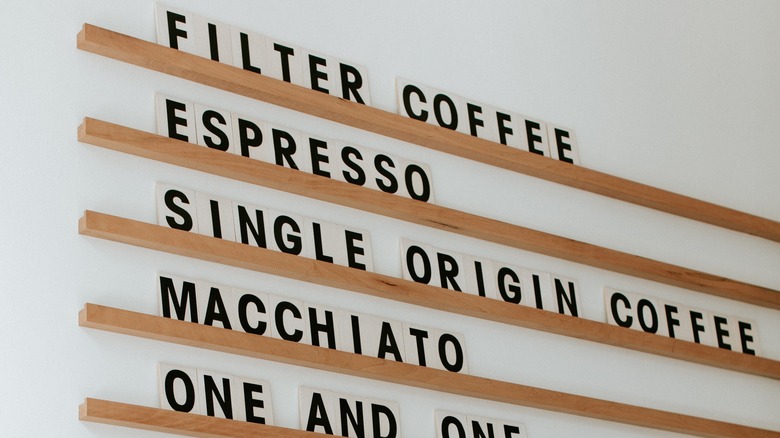The Minimalist Menu Board You Might Recognize From Your Local Café
We eat with our eyes first, but even before that, we need to read the menu. Chances are that you've stumbled across minimalist menu boards at the hipster coffee shop or contemporary café near you — you know the type, bold block letters arranged on a thin railing. It's an aesthetic choice, no doubt, but where did they all come from? The answer to that question is New Zealand. Let us explain.
Basically, a menu (board or book) is meant to let patrons know what's available and what those items cost. But that's only part of a menu's function. According to Aaron Allen & Associates, menus are a direct representation of an eatery as they can convey a lot about the brand simply based on aesthetics. Vital to drawing consumers in and ensuring their continued support, visual elements like a menu board play a significant role in operations. However, some can be complicated to read, like that of messy handwriting scrawled on a chalkboard. This is where a cleaner, more minimalist board comes in.
Trends are constantly changing, yet, minimalism continues to remain at the forefront of interior design based on its timelessness, notes Prestige. With a dedication to simplicity, simple and changeable menu boards also follow this school of thought, which is why they've been quick to crop up in so many new locales across the nation. That said, you might be surprised to learn that the boards can all be traced back to a duo from New Zealand.
The menu boards of George and Willy
George Wilkins and Will McCallum are the two New Zealanders behind the now-famous brand George and Willy. After meeting in college, The Takeout explains the duo decided to go into business together, making homewares, until high praise for their company sign inspired them to shift gears.
Filling a niche for cool, minimalist signage that could be read with ease, unlike typical handwritten café menus, George and Willy soon became a brand known for their minimalist menu boards. Their popularity only surged thanks to social media. Public interest skyrocketed by posting images of their boards on Pinterest, causing an explosion in overseas sales that's remained constant.
Currently, George and Willy offer a wide range of changeable menu boards, each varying in size and style. Averaging about $400, the signage is a bit of an investment but competitive in comparison to the other retailers. Not quite sold on the idea? Aside from being a great way to appeal to customers, the menu boards also add some flexibility from a back-of-house perspective, especially if menu items are frequently susceptible to changing — no wonder these boards are popular!

